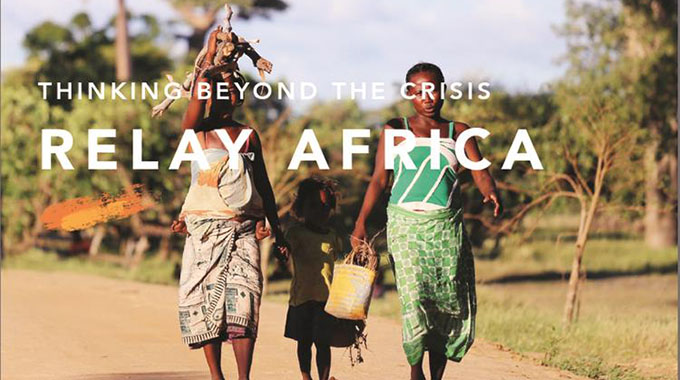New software to help manage chronic ailments

Sifelani Tsiko Agric, Environment & Innovations Editor
A local software company has launched a new digital health technology that offers an opportunity for patients to become more involved and engaged when it comes to their health and to manage chronic conditions.
Relay Africa, a local technology firm, launched the Kaadi system as part of its efforts to build modern technologies that could be integrated into the country’s healthcare sector to improve service delivery.
Tinashe Manyame, head of Relay Africa, told The Herald recently that the new software — Kaadi — aims to digitise medical records and cut time spent on health administration at most health care systems.
He said the software was developed last year in December by a team made up of young Zimbabwean start-ups — Mandisa Mjamba, a software engineer based in South Africa; Jabulani Nyoni (SA), a data engineer; Takudzwa Mugudu (US), an accountant —and with the support of the hardware partners from China.
The Kaadi software largely aims to digitalise medical records to improve healthcare service delivery in the country.
Kaadi is a Swahili word that means card.
“What excites me the most about all this is the idea of us young Africans coming together to use our skills in response to some of Africa’s biggest challenges,” said Manyame.
“Our goal is to transform the healthcare industry and move from reactive care to preventative care. The fact that we are leading in innovations for the Fourth Industrial Revolution is a good sign for the future of our continent.”
The software is designed to replace the traditional hospital card used in Zimbabwe and across many countries in Africa with a system that records, stores, analyses and shares medical records with relevant practitioners and health centres in the event of a patient transfer. Kaadi allows the medical industry to have realtime records of reports across the country and this allows for quicker response in the event of an outbreak.
A patient can visit the doctor, get treated and have the visit including prescriptions added onto the system. The patient can then go to the pharmacy and get drugs that have already been prescribed and shared with the pharmacist digitally.
This sharing also includes laboratories and other practitioners who work hand-in-hand with medical doctors to treat patients.
“The company has put in very strict measures to ensure that the software is secure and that patient information is secure,” Manyame said.
“The software is the very foundation of our goal which is to move the industry from reactive care to preventive care through continuous monitoring. With this in mind, the company has the intention of spreading the use of this software across Zimbabwe in every health facility no matter how remote.
“This will ensure that the intention of having continuous monitoring and recoverable medical records is met.”
Some of the products being promoted by the firm include bracelets that can help with continuous monitoring for the management of diseases. In the case of high blood pressure, Manyame said, it was cheaper to manage before it becomes full hypertension.
“We are in talks with big companies as well to reduce man hours lost due to ‘doctors’ visits.’ Employees health is monitored right round the clock and doctors visits are verified when necessary, this has seen improvements in productivity,” he said.
“This new system is realtime, it can store and can help medical practitioners to analyse diseases and trends in the country.”
Records are seen in real time and data managers can evaluate community health and epidemiological trends in the setting of a mapped-out environment.
If adopted on a bigger scale, the software offers tremendous value to clinicians and can enhance the quality of care to patients.
“So far, we have rolled out the software to four private clinics and hospitals,” Manyame said.
“Our target is to reach out to all corners of the country — both urban and rural. This initiative will bear great testimony to our ability to be innovative in all matters that ensure the highest standards are met.”
Software developers say sharing electronic health patient records (EHRs) across independent clinics allows patients to seek care where appropriate. This, they say, is particularly important in resource-constrained settings, where necessary healthcare resources may exist within communities, but are distributed across many care organisations.
Most African countries are pressing ahead with digital health innovations to improve healthcare delivery on the continent. In some cases, new technology allows the medical staff to contact the patient and offer solutions, in real time to avoid a catastrophe.
“In the event that a patient has become unresponsive and their readings are also showing a spike, the device shows one’s location and also that of the nearest health facility so that an ambulance can be called for the patient,” noted one expert on digital health.
In May this year, another digital health application by the Zimbabwe Telemedicine Network (ZTN) was launched to provide health education and other digital tools for use by health professionals.
The mobile application called MyCpdZw was launched by the ZTN as part of efforts to promote the growth of information and communication technology in the country’s health sector. Health experts define telemedicine as the provision of healthcare over a distance using information and communication technology (ICT), and includes the provision of health education over a distance.
This, they say, involves monitoring the health of people in their homes or some remote rural healthcare centre by devices that send information back to a central site by telephone or through the internet.
Telemedicine, experts further say, can also be conducted by live interactive video-conferencing, with the patient seeing the doctor face-to-face, over a distance, with special devices used to assist clinical examination.
Clinics and hospitals in both rural and urban areas lack resources, drugs, manpower and accessories, something that hinders the delivery of quality healthcare to people.
Health professionals in remote parts of the country still lack opportunities for training and career advancement, up-to-date information and digital applications to help address challenges they face in their work.
Africa carries 24 percent of the world’s burden of disease and is served by only three percent of the world’s health workers, who have access to one percent of global health expenditure, according to WHO.
Its population continues to grow rapidly and is expected to nearly double by 2050, something which makes new digital innovations an urgent priority.
Health experts say new digital health innovations hold great promise for Zimbabwe and most other African countries.
They say it can provide rural health care in the most remote areas, a move which can help drive the access to health for all campaign forward.
All that is needed is a good network and broadband for most rural clinics and hospitals. This will certainly reduce the long journeys that people have to make to access the nearest healthcare centre.
Digital health innovations can also increase access to scarce medical specialists in bigger centres and academic institutions.
“The world is moving into the Fourth Industrial Revolution and this will bring in new ways of tackling issues that have always burdened the continent,” said Manyame.
“As a group of young Africans, Relay Africa thinks beyond the crisis and is set to become a leading player in creating solutions for Africa’s challenges.”
New digital health innovations can help citizens in Zimbabwe and Africa at large to access services and tools to improve health.
African e-health expert even suggest that it can also save money — more than US$200 billion by 2030 in Africa alone.
African leaders who gathered at the African Ministerial Dialogue on Digital Health Leadership at the 2017 World Health Assembly affirmed their commitment to develop and implement robust national strategies that pair technology with solid strategies to achieve universal health coverage.
According to the World Health Organisation, between 60 percent and 80 percent of people in Africa are estimated to be using mobile phones, allowing for the effective use of mHealth and eHealth solutions to save lives, as well as eliminate distance-time barriers.
African health experts say transforming healthcare with technology should involve greater promotion of emerging technology trends in healthcare such as wearables, electronic health records, healthcare data security and privacy, telemedicine, predictive analytics and much more.
This, they say, will have greater impact on hospital operations and healthcare delivery on the continent.










Comments